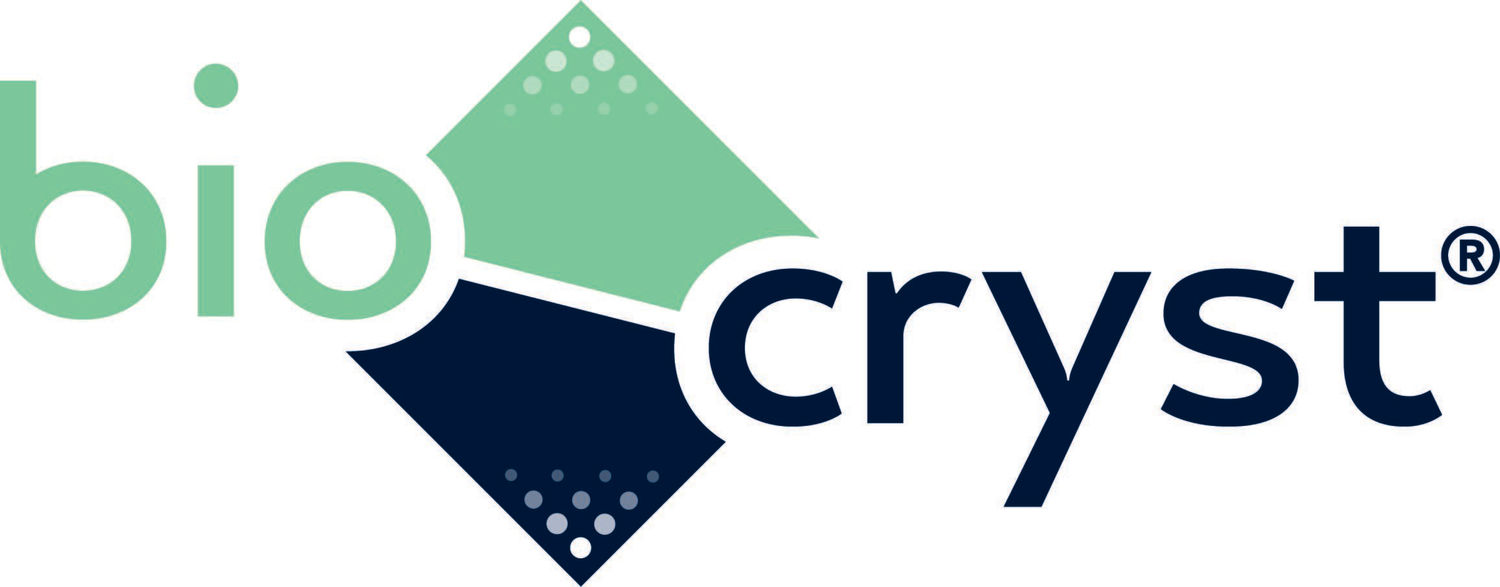Request Demo
Last update 08 May 2025
PNP
Last update 08 May 2025
Basic Info
Synonyms Inosine phosphorylase, Inosine-guanosine phosphorylase, NP + [5] |
Introduction Catalyzes the phosphorolytic breakdown of the N-glycosidic bond in the beta-(deoxy)ribonucleoside molecules, with the formation of the corresponding free purine bases and pentose-1-phosphate (PubMed:23438750, PubMed:9305964). Preferentially acts on 6-oxopurine nucleosides including inosine and guanosine (PubMed:9305964). |
Related
14
Drugs associated with PNPTarget |
Mechanism PNP inhibitors [+1] |
Active Org. |
Originator Org. |
Active Indication |
Inactive Indication |
Drug Highest PhaseApproved |
First Approval Ctry. / Loc. Japan |
First Approval Date31 Mar 2017 |
Target |
Mechanism PNP stimulants |
Active Org. |
Originator Org. |
Active Indication |
Inactive Indication |
Drug Highest PhasePhase 2 |
First Approval Ctry. / Loc.- |
First Approval Date20 Jan 1800 |
Target |
Mechanism PNP inhibitors |
Active Org. |
Originator Org. |
Active Indication |
Inactive Indication- |
Drug Highest PhasePreclinical |
First Approval Ctry. / Loc.- |
First Approval Date20 Jan 1800 |
29
Clinical Trials associated with PNPNCT03754933
Phase 1/2, Open-label Study Evaluating Safety of Repeat Administration of Ad/PNP-F-araAMP (Ad/PNP Administered Intratumorally Followed by Intravenous Fludarabine Phosphate) in Subjects With Recurrent, Local Head and Neck Cancer
Primary Objective: The primary objective of the study is to evaluate the safety of repeat administration of a dose level of Ad/PNP plus fludarabine phosphate (F-araAMP) which demonstrated anti-tumor activity in patients with advanced head and neck cancer in a completed phase I study.
Secondary Objective: The secondary objective is to evaluate the antitumor activity of repeat administration of Ad/PNP plus F-araAMP.
FDA Office of Orphan Drugs Division is a source of funding for the overall project.
Secondary Objective: The secondary objective is to evaluate the antitumor activity of repeat administration of Ad/PNP plus F-araAMP.
FDA Office of Orphan Drugs Division is a source of funding for the overall project.
Start Date11 Feb 2019 |
Sponsor / Collaborator GeoVax, Inc. [+3] |
NCT01776411
Phase I/II Clinical Study of Forodesine in Japanese Recurrent/Refractory Peripheral T-cell Lymphoma Patients
Phase I portion:
To confirm safety and tolerability in recurrent/refractory peripheral T-cell lymphoma patients during repeated oral administration of forodesine 300 mg twice daily (600 mg/day) for 28 days, and determine the recommended dose. Also, to evaluate pharmacokinetics.
Phase II portion:
To evaluate the efficacy, safety, and pharmacokinetics of the recommended dosage regimen determined in the phase I portion. The primary efficacy endpoint shall be objective response rate (ORR).
To confirm safety and tolerability in recurrent/refractory peripheral T-cell lymphoma patients during repeated oral administration of forodesine 300 mg twice daily (600 mg/day) for 28 days, and determine the recommended dose. Also, to evaluate pharmacokinetics.
Phase II portion:
To evaluate the efficacy, safety, and pharmacokinetics of the recommended dosage regimen determined in the phase I portion. The primary efficacy endpoint shall be objective response rate (ORR).
Start Date01 Jan 2013 |
Sponsor / Collaborator |
JPRN-JapicCTI-121985
Phase 1/2 clinical study of forodesine in Japanese recurrent/refractory peripheral T-cell lymphoma
Start Date01 Nov 2012 |
Sponsor / Collaborator |
100 Clinical Results associated with PNP
Login to view more data
100 Translational Medicine associated with PNP
Login to view more data
0 Patents (Medical) associated with PNP
Login to view more data
3,157
Literatures (Medical) associated with PNP31 Dec 2025·Hematology
Hematopoietic stem cell transplantation for purine nucleoside phosphorylase deficiency with two novel mutations: a case report and review of literature
Article
Author: Liu, Minyuan ; Li, Jie ; Xiao, Peifang ; Zhang, Senlin ; Hu, Shaoyan ; Ji, Qi ; Qian, Jing ; Li, Bohan
01 May 2025·Molecular Neurobiology
Identification of Potential Intervention Targets Involved in Prior Exercise that Attenuates Peripheral Neuropathic Pain by Integrating Transcriptome and Whole-genome Bisulfite Sequencing Analyses
Article
Author: Zheng, YiLi ; Zheng, JieWen ; Chen, BingLin ; Zhu, ChenChen ; Wang, Ting ; Guo, JiaBao ; Gong, Chan
01 May 2025·Pesticide Biochemistry and Physiology
Comparison on the conformation folding and structure change of serum albumin induced by methyl parathion and its metabolite p-nitrophenol
Article
Author: Wu, Xianglong ; Zhang, Qiulan ; Ni, Yongnian ; Wang, Zhu ; Chen, Lu
2
News (Medical) associated with PNP28 Feb 2023
The Orphan Drug Designation underscores the significant unmet medical need and will grant LR 09 seven-year marketing exclusivity following drug approval by the FDA
ZUG, Switzerland, Feb. 28, 2023 (GLOBE NEWSWIRE) -- Laevoroc Immunology (‘Laevoroc’ or ‘the company’), a privately-owned, Swiss oncology development company, today announced that the U.S. Food and Drug Administration (FDA) has granted Orphan Drug Designation for LR 09, a novel metabolic immune checkpoint inhibitor, for the treatment of patients with haematological malignancies who are diagnosed with a relapse after allogeneic stem cell transplant (SCT).
LR 09 is a novel, rationally-designed form of the small molecule drug, Ulodesine, a purine nucleoside phosphorylase (PNP) inhibitor that was originally developed for the treatment of autoimmune and inflammatory disorders. The decision to develop LR 09 for the treatment of relapse after stem cell transplantation follows the achievement of complete remission in a three-year-old patient using a pharmacologically analogous PNP inhibitor (1) whose US development was later discontinued, and the discovery that inhibition of PNP activates (instead of suppressing) the immune system (2).
Recent research at the University of California, Los Angeles (UCLA), has revealed a novel, ground-breaking mode of action for LR 09 as a metabolic immune checkpoint inhibitor and supports its development for the treatment of patients experiencing relapse after allogeneic SCT. The data, published in 2022 in the Journal of Clinical Investigation, has documented the immune-activating effects of LR 09, through the elevation of intracellular guanosine, TLR7 activation, and the activation and proliferation of T-cells and germinal center B-cells, resulting in the initiation of a graft-versus-leukemia effects (3). With its favourable safety pro in earlier clinical development and its improved stability and manufacturing process versus earlier PNP inhibitors, the Orphan Drug Designation for the US market now adds to the promise of LR 09 as an oral immuno-oncology agent.
“Receiving the FDA’s Orphan Drug Designation for LR 09 is a significant milestone for Laevoroc, bringing us one step closer to delivering a potential cure to patients who suffer relapse after allogeneic transplantation,” said Dr. Thomas Mehrling, haematologist-oncologist, co-founder, and CEO of Laevoroc. “Today, the prognosis for these patients remains extremely poor and they have no standard of care available to them. The Orphan Drug Designation underlines the significant unmet need for novel treatment options and Laevoroc is more determined than ever to permanently change this situation and restore hope for relapsing patients and their families.”
The FDA grants Orphan Drug Designation to investigational therapies for rare diseases or conditions affecting fewer than 200,000 people in the United States. Receiving orphan status qualifies the sponsor for certain development incentives, including tax credits for clinical development costs and seven-year marketing exclusivity following drug approval by the FDA.
Laevoroc Immunology acquired the commercial rights to LR 09 for new indications in 2021. The Company has active research collaborations with UCLA and the Fred Hutchinson Cancer Center in Seattle to support the drug’s development, with preclinical models of leukemia relapse after allogeneic SCT well underway. The Company has successfully raised USD 1.1 million in seed capital and is currently raising Series A financing to bring LR 09 to the clinic, and to patients, as swiftly as possible.
References
(1)
(2)
(3)
About Laevoroc Immunology
Laevoroc Immunology is a Swiss immuno-oncology development company based in Zug and founded in 2021 by Thomas Mehrling MD PhD, and Davide Guggi PhD, who have over 40 years’ combined experience in oncology and the pharmaceutical industry. The company is focused on developing immuno-oncology compounds with the potential to transform the treatment outcomes of medically underserved haematological malignancies and become game-changers in a wider range of applications. Its lead compound, LR 09 (a novel salt form of the small molecule drug, ulodesine), is a PNP inhibitor in preclinical development for the treatment of leukemia relapse following allogeneic stem cell transplantation. The development is supported by research collaborations with the University of California, Los Angeles (UCLA) and the Fred Hutchinson Cancer Center.
Visit our website – Laevoroc.com and follow us on LinkedIn
Contacts
Laevoroc
info@laevoroc.com
Scius Communications (for Laevoroc)
Katja Stout, Daniel Gooch
Phone: +44(0)7789435990
Email: katja@sciuscommunications.com
Orphan DrugImmunotherapyClinical Study
08 Dec 2022
UCLA data in the Journal of Clinical Investigation supports LR09 drug development as a metabolic immune checkpoint inhibitor for the treatment of leukemia
Zug, Switzerland, 8 December 2022: Laevoroc Oncology (‘Laevoroc’ or ‘the company’), a privately-owned, Swiss oncology development company, announced today the publication of key preclinical data carried out at the University of California, Los Angeles (UCLA) which provides mechanistic insights into the immunoregulatory functions of purine nucleoside phosphorylase (PNP) with Laevoroc’s PNP inhibitor, LR 09. (1).
The research shows that PNP is a novel metabolic immune checkpoint and LR 09 (Ulodesine), originally developed, and approved, for the treatment of gout, is a metabolic immune checkpoint inhibitor that activates the immune system through release of cytokines, expansion of germinal center B-cells and follicular helper T-cells.
Relapse post-transplantation is the most frequent cause of treatment failure, in children and adults with leukemia. LR 09 has demonstrated an excellent safety pro the clinic and is formulated as an oral once-a-day treatment. Relapsed leukemia places a heavy economic burden on health systems. In the US healthcare setting, the mean total episode cost (from relapse date to death or end of study period), in a sample of around 700 patients, has been estimated, in 2019, at around $439,000 per patient (2).
Laevoroc’s co-founder and CEO, Thomas Mehrling, MD, PhD, said, “We are delighted to have achieved this discovery with UCLA, which supports our vision for LR 09 to enable the treatment of relapsed leukemia — a devastating diagnosis for the patient and their families and an important cost burden for healthcare systems. Using our approach, we can help the grafted immune system recognize and combat the host leukemia, resulting in long-term response or cure.”
Laevoroc Immunology’s CSO, Shanta Bantia, PhD, said, “We believe our innovation is a game-changing new therapy with the potential to become standard of care. Our vision with LR 09 is to enable the cure of relapsed leukemia.”
Laevoroc Immunology continues to focus on fundraising to bring LR 09 to the clinic, and to patients, as swiftly as possible. Laevoroc acquired the commercial rights to LR 09 for new indications in 2021.
References
(1)
(2)
-Ends-
About Laevoroc Immunology
Laevoroc Immunology is a Swiss immuno-oncology development company based in Zug and founded in 2021, by Thomas Mehrling MD PhD, and Davide Guggi PhD, who have over 40 years’ combined experience in oncology and the pharmaceutical industry. The company is focused on developing immuno-oncology compounds with the potential to transform the treatment outcomes of medically underserved haematological malignancies and become game-changers in a wider range of applications.
The company has raised over USD 1.1M in seed finance and is actively raising Series A financing for its subsidiaries.
Visit our website – Laevoroc.com
Contacts
Laevoroc Oncology
info@laevoroc.com
Scius Communications (for Laevoroc Oncology)
Katja Stout/Daniel Gooch
Phone: +44(0)7789435990
Email: katja@sciuscommunications.com
Immunotherapy
Analysis
Perform a panoramic analysis of this field.
login
or

AI Agents Built for Biopharma Breakthroughs
Accelerate discovery. Empower decisions. Transform outcomes.
Get started for free today!
Accelerate Strategic R&D decision making with Synapse, PatSnap’s AI-powered Connected Innovation Intelligence Platform Built for Life Sciences Professionals.
Start your data trial now!
Synapse data is also accessible to external entities via APIs or data packages. Empower better decisions with the latest in pharmaceutical intelligence.
Bio
Bio Sequences Search & Analysis
Sign up for free
Chemical
Chemical Structures Search & Analysis
Sign up for free

